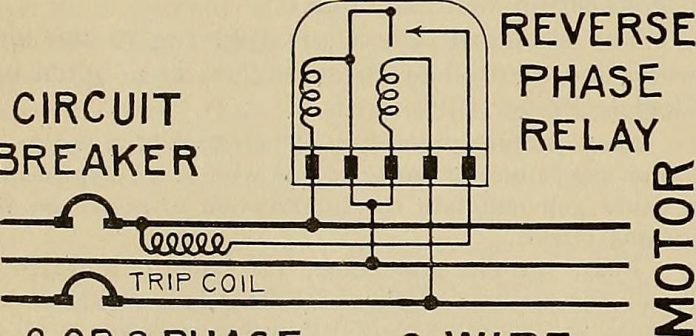Last Updated on May 21, 2024 by Ali Hamza
In a shunt trip breaker, the main circuit breaker and shunt trip accessory are combined into one. You can install this alongside your main breaker to add extra protection to your electrical system. Manually or automatically cutting your circuit’s electrical supply adds security to your electrical system.
This accessory will prevent short circuits and electrical damage if a disaster occurs in your home. This guide is all about shunt trip breakers in detail.
Shunt Trip Breaker
An electric circuit breaker trips when a fault condition is detected, and it automatically shuts off the flow of electricity to prevent overheating of the wiring.
Your circuit breakers can be equipped with shunt trip breakers, which can trip them remotely at any time or automatically during a surge. As a result, injuries and equipment damage are prevented during an emergency.
The two main types are automatic and manual shunt trip breakers. The manual switch lets you shut off the breaker outside the building using a remote control. An automatic regulator shuts off the power when it detects a surge from an external power source.
Shunt trip breakers and regular circuit breakers: what’s the difference?
- Ground fault breakers monitor the neutral wire’s current flow. Alternatively, shunt trip breakers can be tripped after the shunt coil is energized.
- A relay is used to trip regular breakers, whereas a shunt coil is used to trip-shunt trip coil breakers.
- Connecting a GFCI (Ground Fault Circuit Interrupter) to a control circuit is impossible, but you can connect a shunt trip breaker.
Working of shunt trip breaker
It is common for electrical currents to pass unchanged through a house’s circuit breaker. However, this power surge can trip the main breaker switch when it surges too high, causing an electromagnet beneath the button to charge and cut power.
Shunt trip breakers provide another way to charge electromagnets and trip switches, allowing for automatic or remote power shutoff.
There are some shunt trips that connect to an external power source. A signal is sent from the shunt trip to the breaker when a power surge reaches this source. This mechanically cuts the power when the power surge comes from this source.
Read more:Replacing Knob And Tube Wiring: Its Importance, Cost And Steps Of Replacing Knob And Tube Wiring
As well as connecting the shunt trip to an external switch, it can be controlled remotely. An electrical surge is sent through the wiring of the shunt trip switch when the button is pressed, shutting off the power.
Homeowners often install shunt trip breakers as a safety precaution, even though they are not required. Additionally, power surge protectors are commonly used in businesses that use industrial machinery or expensive electrical systems that could be damaged by a power surge.
The purpose of a shunt trip breaker
An electrical accident can be prevented with a shunt trip breaker which allows us to quickly switch off the main circuit breaker from our nearest place in a short time.
Importance of Shunt Trip Breakers
A shunt trip breaker can be used in your home to shut off the electrical current and prevent injuries or electrical damage during an emergency.
The most common way people use shunt trips is during a fire to turn off electrical equipment. A smoke alarm connected to an electrical shunt trip prevents fire-related electrical hazards by shutting off electricity automatically when it detects an alarm.
It is essential to install a shunt trip if your sprinkler system is connected to your smoke detector. When the smoke detector activates the sprinklers, this device immediately shuts off your electrical power, preventing electrocution and minimizing damage to your electrical system.
Uses of shunt trip breaker
It is defined as a way to cut off electrical power not just through thermal activation, but through other sensors as well. Circuit breakers are optional accessories in a home electrical system, so this accessory is not required.
Nevertheless, it is recommended for added safety. If you work with industrial machinery, this is especially true. In addition, you can use it to manually shut your main breaker down in case of an emergency.
Shunt trips are expensive to install, so consider the cost and the system you already have before installing one. A new breaker panel and circuit breakers may be needed, especially if the breakers are not compatible with shunt trips. The remote emergency switch may require a new line connected to your breaker box.
There is usually a shunt trip breaker in most commercial kitchens, elevators, and offices because it is a legal requirement. ANSI/ASME CSD-1 is the standard used for kitchens, while ASME A17.1 is the standard used for elevators and escalators. ASME provides controls and safety standards for these devices.
Final thoughts
Shunt trips are optional accessories for circuit breakers that provide added protection. Sensors are designed to be connected to secondary sensors. The circuit breaker is automatically tripped when the sensor is triggered. Alternatively, a remote switch can be installed to activate it.
FAQs (Frequently Asked Questions)
How does a breaker shunt trip?
The shunt trip device mechanically trips a circuit breaker when power is applied to its shunt trip terminals. Due to the fact that the power for the shunt trip does not come from the breaker, it must be supplied externally.
What is the working principle of a shunt trip breaker?
Shunt trips are optional accessories for circuit breakers that provide additional protection. The secondary sensor is designed to connect to it. When the sensor is activated, the breaker is automatically tripped. Alternatively, you can install a remote switch to start it.
Is a neutral required for a shunt trip breaker?
In most shunt-trip breakers, the coil cannot be constantly energized, so it must be powered by something that loses power when the system is tripped. A ring with only one wire must be internally powered, which means you must connect the white wire to neutral for it to trip, but I haven’t seen one like that.
What is the function of shunts in electrical systems?
In electrical engineering, a shunt is a device that generates a low-resistance path for a current. By doing so, the circuit can be switched to another point at which the current can flow. A shunt resistor may also be known as an ammeter or a current shunt resistor.
In MCCB, what is shunt release?
By applying a voltage signal externally, the shunt release device opens the mechanism of the MCCB. A control circuit is also included in the shunt release device, along with the actuator. There are two bodies for each part of a conventional shunt release device.
In an ammeter, why is there a shunt?
A shunt in an ammeter connects two points in an electric circuit with low resistance. By adding resistance, a portion of the current can flow in a different direction, so electricity has an alternative path.
Apart from this, if you want to knw about circuit breaker then please visit our Home improvement category
























